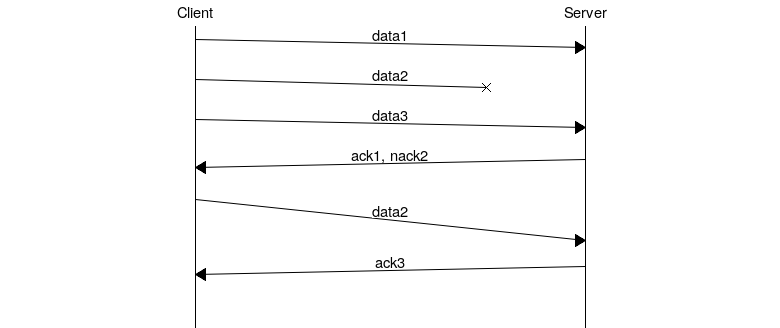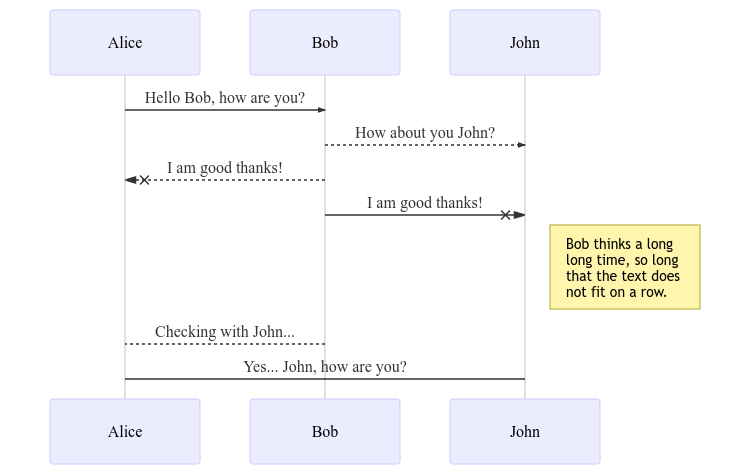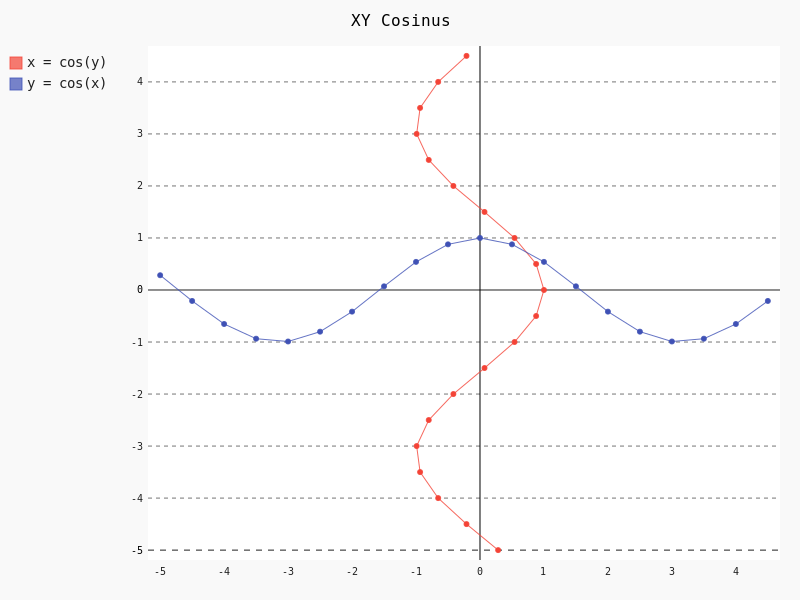\\\///
/ _ _ \
(| (.)(.) |)
.--------------------.OOOo--()--oOOO.-------------------.
| |
| ____ _ |
| / _/____ ___ ____ _ ____ _ (_)____ ___ |
| / / / __ `__ \ / __ `// __ `// // __ \ / _ \ |
| _/ / / / / / / // /_/ // /_/ // // / / // __/ |
| /___//_/ /_/ /_/ \__,_/ \__, //_//_/ /_/ \___/ |
| /____/ |
| |
'-------------------.oooO-------------------------------'
( ) Oooo.
\ ( ( )
\_) ) /
(_/
Imagine is a pandoc filter that will turn codeblocks tagged with certain classes into images or ascii art. The following are currently supported:
actdiag, asy, asymptote, blockdiag, boxes, circo, ctioga2, ditaa, dot, fdp,
figlet, flydraw, gle, gnuplot, graph, graphviz, gri, imagine, mermaid, mscgen,
neato, nwdiag, octave, packetdiag, pic, pic2plot, plantuml, plot, ploticus,
protocol, pyxplot, rackdiag, seqdiag, sfdp, shebang, twopi
```{.mscgen im_out="img,fcb" im_fmt="png"}
msc {
hscale="1.3", arcgradient = "8";
a [label="Client"],b [label="Server"];
a=>b [label="data1"];
a-xb [label="data2"];
a=>b [label="data3"];
a<=b [label="ack1, nack2"];
a=>b [label="data2", arcskip="1"];
|||;
a<=b [label="ack3"];
|||;
}
```
```{.mermaid im_opt="-H 300" im_fmt="png" im_out="img,fcb"}
sequenceDiagram
Alice ->> Bob: Hello Bob, how are you?
Bob-->>John: How about you John?
Bob--x Alice: I am good thanks!
Bob-x John: I am good thanks!
Note right of John: Bob thinks a long<br/>long time, so long<br/>that the text does<br/>not fit on a row.
Bob-->Alice: Checking with John...
Alice->John: Yes... John, how are you?
```
```{.gnuplot im_fmt="png" im_out="img,fcb"}
set terminal png
set dummy u,v
set key bmargin center horizontal Right noreverse enhanced autotitles nobox
set parametric
set view 50, 30, 1, 1
set isosamples 50, 20
set hidden3d back offset 1 trianglepattern 3 undefined 1 altdiagonal bentover
set ticslevel 0
set title "Interlocking Tori"
set urange [ -3.14159 : 3.14159 ] noreverse nowriteback
set vrange [ -3.14159 : 3.14159 ] noreverse nowriteback
splot cos(u)+.5*cos(u)*cos(v),sin(u)+.5*sin(u)*cos(v),.5*sin(v) with lines,\
1+cos(u)+.5*cos(u)*cos(v),.5*sin(v),sin(u)+.5*sin(u)*cos(v) with lines
```
Shebang using Python & Pygal
```{.shebang im_fmt="png" im_out="img,fcb"}
#!/usr/bin/env python3
import sys
import pygal
from math import cos
xy_chart = pygal.XY()
xy_chart.title = 'XY Cosinus'
xy_chart.add('x = cos(y)', [(cos(x / 10.), x / 10.) for x in range(-50, 50, 5)])
xy_chart.add('y = cos(x)', [(x / 10., cos(x / 10.)) for x in range(-50, 50, 5)])
xy_chart.render_to_png(sys.argv[-1])
```
/* _\|/_
(o o)
+----oOO-{_}-OOo------------------------------+
| #!/bin/bash |
| # I seem to have got myself boxed in! |
| cat $0 | boxes -d peek -p h4 |
+--------------------------------------------*/
```{.shebang im_out="stdout,fcb"}
#!/bin/bash
# I seem to have got myself boxed in!
cat $0 | boxes -d peek -p h4
```
More examples on
github, which
also includes formats other than png.
Imagine
A pandoc filter to turn fenced codeblocks into graphics or ascii art by
wrapping some external command line utilities, such as:
actdiag, asy, asymptote, blockdiag, boxes, circo, ctioga2, ditaa, dot,
fdp, figlet, flydraw, gle, gnuplot, graph, graphviz, gri, imagine,
mermaid, mscgen, neato, nwdiag, octave, packetdiag, pic, pic2plot,
plantuml, plot, ploticus, protocol, pyxplot, rackdiag, seqdiag, sfdp,
shebang, twopi
Installation
% sudo -H pip install pandoc-imagine
or simply save `pandoc_imagine.py` anywhere along python's sys.path
Dependencies
% sudo -H pip install pandocfilters six
and one (or more) of the packages that provide above utilities.
Pandoc usage
% pandoc --filter pandoc-imagine document.md -o document.pdf
Markdown usage
```cmd
code
```
Alternate, longer form:
```{.cmd im_opt=".." ...}
code
```
which will run `cmd` (if known) to proces the `code` into an image and
replaces the fenced code block with an Image in a paragraph of its own or any
ascii art in its own CodeBlock.
If the command fails, the original fenced code block is retained unchanged.
Usually, only errors are printed to stderr but you can get more info by
setting the `im_log` option (see below).
If the command succeeds but produces no image, a line reporting the missing
image is included in the output document.
Imagine options
Imagine's behaviour can be influenced by setting these options:
- im_opt="" or any cli-options to pass in on the command line.
Some classes already provide some defaults (as required by the command).
- im_out="img", or ordered csv-list of keywords indicating what to produce:
- img an image-link in a paragraph
- ocb the original codeblock but without imagine's class or options
- fcb an anonymous codeblock containing the original codeblock
- stdout an anonymous codeblock containing captured stdout (if any)
- stderr an anonymous codeblock containing captured stderr (if any)
Some workers ignore 'img' by necessity since they donot produce graphical
data that can be linked to, e.g. `figlet` or `protocol`, while others the
'stdout' will ignored because that's where they produce their graphical
data.
- im_prg=None, or a cli-cmd name to override class-to-command map.
Normally, the class on the code block maps directly to a command line
tool to use. For example,
```gri
..
```
maps gri to `gri`, but that can be changed by `{.gri im_prg="gri2"} to use
`gri2` instead of `gri`.
- im_fmt="png", or another output format of your choosing depending on the
command line tool used. Some tools donot derive their output image format
from an intended output file name extension, but instead require it to be
set in the tool's codeblock containing its instructions. Be sure the code
in the codeblock matches `im_fmt` or pandoc may have trouble assembling the
final document.
- im_dir="pd", or antoher absolute or relative (to the working directory)
path in which input/output files are to be stored during processing.
Note that an "-images" is still tacked onto the end of the path though.
- im_log=0, which defaults to printing only errors caught during processing.
Set it to -1 to completely silence Imagine, or as high as 4 for debug level
output if somethings goes wrong and you need more information on what is
going on.
Option values are resolved in order of most to least specific:
1. {.klass im_xyz=".."} codeblock specific
2. imagine.klass.im_xyz: .. metadata, klass specific
3. imagine.im_xyz: .. metadata, imagine specific
4. class variable hardcoded default
Notes:
- filenames are based on a hash of the codeblock + its attributes
- uses subdir `{im_dir}-images` to store any input/output files
- there's no clean up of files stored there
- if an output filename exists, it is not regenerated but simply linked to.
- `packetdiag`'s underlying library seems to have some problems.
Some commands follow a slightly different pattern:
- 'img' directive is ignored by commands that only produce ascii
- ctioga2 defaults to pdf instead of png
- flydraw produces a gif, not png
- gle also creates a .gle subdir inside the images-dir
- gri produces a ps, which is `convert`ed to png
- imagine reads its code as help-topics, returns codeblocks with help-info
- plot reads its codeblock as the relative path to the file to process
- pyxplot will have `set terminal` & `set output` prepended to its `code`
- shebang runs its codeblock as a script with <fname>.{im_fmt} as its argument.
- use {.shebang im_out="stdout"} for text instead of an png
Merge `Image`'s into a single `Para`.
Based on a feature request (https://github.com/hertogp/imagine/issues/16) by
pbsds (https://github.com/pbsds), `pandoc-imagine` has been extended to
better cooperate with pandoc-crossref
(https://github.com/lierdakil/pandoc-crossref#pandoc-crossref-filter-), whose
subfigure grids (https://lierdakil.github.io/pandoc-crossref/#subfigure-grid)
facility requires that consecutive image links be located inside a single
paragraph.
This means that 'Div's, when assigned the 'pandoc-imagine' specific class
`im_merge`, will have their block-level elements processed individually. Any
consecutive `Image`-links are collected into a single `Para`, other elements
are included in the `Div` contents as-is.
See Examples/inline.md and Examples/inline.pdf.
Security
Imagine just hands the fenced codeblocks to plotting tools to process or
simply runs them as system scripts, as-is.
Shebang's are inherently unsafe and most of the plotting tools implement
their own 'little' languages, which can create beautiful images, but can also
cause harm.
There is no way to check for 'side effects' in advance, so make sure to check
the fenced codeblocks before running them through the filter.
Imagine class
The imagine class puts documentation of topics at your fingertips, like so:
```imagine
klass
```
Use `imagine` as klass to get the module's docstring (ie this text) and/or
one or more of the commands you're interested in, each on a separate line.
Thanks for feedback:
amietn, chdemko, heyrict, priiduonu, K4zuki, pbsds
Asy
sudo-apt-get install asymptote
See http://asymptote.sourceforge.net/
Runs asy -o <fname>.{im_fmt} {im_opt} <fname>.asy
Wraps:
- 'asy' -> asy
- 'asymptote' -> asy
BlockDiag
sudo pip install blockdiag nwdiag actdiag seqdiag
http://blockdiag.com/
Runs {im_prg} {im_opt} -T {im_fmt} <fname>.{im_fmt} -o <fname>.{im_prg}
Wraps:
- 'blockdiag' -> blockdiag
- 'seqdiag' -> seqdiag
- 'rackdiag' -> rackdiag
- 'nwdiag' -> nwdiag
- 'packetdiag' -> packetdiag
- 'actdiag' -> actdiag
Boxes
sudo apt-get install boxes
http://boxes.thomasjensen.com
Runs boxes {im_opt} <fname>.boxes
Wraps:
- 'boxes' -> boxes
Ctioga2
sudo apt-get install ctioga2
http://ctioga2.sourceforge.net
Runs ctioga2 {im_opt} -f <fname>.ctioga2
Wraps:
- 'ctioga2' -> ctioga2
Ditaa
sudo apt-get install ditaa
http://ditaa.sourceforge.net
Runs ditaa <fname>.ditaa <fname>.{im_fmt} {im_opt}
Wraps:
- 'ditaa' -> ditaa
Figlet
sudo apt-get install figlet
http://www.figlet.org
Runs figlet {im_opt} < code-text
Wraps:
- 'figlet' -> figlet
Flydraw
sudo apt-get install flydraw
http://manpages.ubuntu.com/manpages/precise/man1/flydraw.1.html
notes:
- graphic data is printed to stdout
- so 'stdout' in im_out option is silently ignored
Runs flydraw {im_opt} < code-text
Wraps:
- 'flydraw' -> flydraw
Gle
sudo apt-get install gle-graphics
http://glx.sourceforge.net
Runs gle {im_opt} -verbosity 0 -output <fname>.{im_fmt} <fname>.gle
Wraps:
- 'gle' -> gle
GnuPlot
sudo apt-get install gnuplot
http://www.gnuplot.info
notes:
- graphic data is printed to stdout
- so 'stdout' in im_out option is silently ignored
Runs gnuplot {im_opt} <fname>.gnuplot > <fname>.{im_fmt}
Wraps:
- 'gnuplot' -> gnuplot
Graph
sudo apt-get install plotutils
https://www.gnu.org/software/plotutils
notes:
- graphic data is printed to stdout
- so 'stdout' in im_out option is silently ignored
Runs graph -T png {im_opt} <fname>.graph
Wraps:
- 'graph' -> graph
Graphviz
sudo apt-get install graphviz
http://graphviz.org
Runs {im_prg} {im_opt} -T{im_fmt} <fname>.{im_prg} <fname>.{im_fmt}
Wraps:
- 'dot' -> dot
- 'neato' -> neato
- 'twopi' -> twopi
- 'circo' -> circo
- 'fdp' -> fdp
- 'sfdp' -> sfdp
- 'graphviz' -> dot
Gri
sudo apt-get install gri imagemagick
http://gri.sourceforge.net
Notes
- insists on creating a <fname>.ps in current working directory
- requires `convert` from imagemagick
- ImageMagick's security policy might need massaging
Runs gri {im_opt} -c 0 -b <fname>.gri
Wraps:
- 'gri' -> gri
Imagine
pip install pandoc-imagine
https://github.com/hertogp/imagine
Runs returns documentation in a CodeBlock
Wraps:
- 'imagine' -> imagine
Mermaid
sudo npm install mermaid.cli
https://github.com/mermaidjs/mermaid.cli
Runs mmdc -i <fname>.mermaid -o <fname>.<fmt> {im_opt}
Wraps:
- 'mermaid' -> mmdc
MscGen
sudo apt-get install mscgen
http://www.mcternan.me.uk/mscgen
Runs mscgen -T {im_fmt} -o <fname>.{im_fmt} <fname>.mscgen
Wraps:
- 'mscgen' -> mscgen
Octave
sudo apt-get install octave
https://www.gnu.org/software/octave
Runs octage --no-gui -q {im_opt} <fname>.octave <fname>.{im_fmt}
Wraps:
- 'octave' -> octave
Pic2Plot
sudo apt-get install plotutils
https://www.gnu.org/software/plotutils
notes:
- graphic data is printed to stdout
- so 'stdout' in im_out option is silently ignored
Runs pic2plot -T png {im_opt} <fname>.pic2plot
Wraps:
- 'pic2plot' -> pic2plot
- 'pic' -> pic2plot
PlantUml
sudo apt-get install plantuml
http://plantuml.com
Runs plantuml -t{im_fmt} <fname>.plantuml {im_opt}
Wraps:
- 'plantuml' -> plantuml
Plot
sudo apt-get install plotutils
https://www.gnu.org/software/plotutils
notes:
- graphic data is printed to stdout
- so 'stdout' in im_out option is silently ignored
Runs plot -T {im_fmt} {im_opt} <code-text-as-filename>
Wraps:
- 'plot' -> plot
Ploticus
sudo apt-get install ploticus
http://ploticus.sourceforge.net/doc/welcome.html
Runs ploticus -{im_fmt} -o <fname>.{im_fmt} {im_opt} <fname>.ploticus
Wraps:
- 'ploticus' -> ploticus
Protocol
cd ~/installs/git-repos
git clone https://github.com/luismartingarcia/protocol.git
python setup install
https://github.com/luismartingarcia/protocol.git
Runs protocol {im_opt} code-text
Wraps:
- 'protocol' -> protocol
PyxPlot
sudo apt-get install pyxplot
http://pyxplot.org.uk
Runs pyxplot {im_opt} <fname>.pyxplot
Wraps:
- 'pyxplot' -> pyxplot
SheBang
http://www.google.com/search?q=shebang+line
Runs <fname>.shebang {im_opt} <fname>.{im_fmt}
Wraps:
- 'shebang' -> shebang



